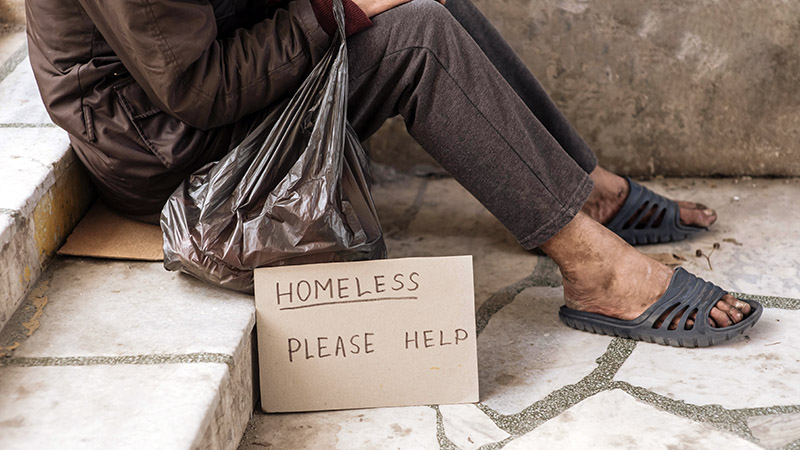At Unity Parenting and Counseling, we recognize that working with homeless youth presents unique challenges. Despite those challenges, our team works diligently to help homeless youth in Chicago. To work effectively with youth experiencing homelessness, it’s important to understand what defines success and how we can achieve it.
First, Unity Parenting and Counseling will explain potential barriers that could limit the successful engagement of homeless youth. Next, we’ll describe several evidence-based strategies for engaging youth who are experiencing homelessness. Finally, we’ll discuss the ways you can measure success when working with homeless youth.
Potential Barriers of Successful Engagement of Homeless Youth
The key to success in working with homeless youth is to engage them in programs and services that provide them with stable housing, supportive connections with adults, and a path to long-term success.
Several factors are known to inhibit the engagement of youth experiencing homelessness. These include:
Rigid Agency Policies.
Agencies need to reevaluate their expectations of acceptable behavior with their programs. Unrealistic expectations may create barriers to effective care.
Legal Issues
Various legal issues can hinder homeless youth from seeking assistance. Some of these issues include a lack of parental permission, the inability to live independently, criminalized youth behaviors, and a lack of documentation and identification.
Lack of Parental Permission
Many states require parental permission for healthcare providers to treat unaccompanied youth. These youth may be unwilling or unable to obtain permission.
Inability to Live Independently
In many areas, youth must be at least 21 years of age to sign a lease on an apartment. This provides a challenge when it comes to youth finding housing.
Criminalized Youth Behaviors
Many communities may also criminalize youth who commit “status offenses.” These are behaviors that are considered illegal only when committed by a minor. Status offenses include
truancy, breaking curfew, or running away.
Lack of Documentation and Identification
Another barrier that homeless youth face is not having proper documentation or identification. Without a permanent address or a safe space to store belongings, documents often get lost. People who are experiencing homelessness often don’t have the money to replace them. This is a barrier to accessing supportive services, employment, education, and housing.
Substance Use
Homeless youth who are using drugs and alcohol may believe that their substance use will keep them from accessing programs and services such as emergency or transitional housing. As a result, they may not even consider accessing available services.
Drug use can also impair judgment and decision-making. This is critical to consider when encouraging youth to engage with providers or access services.
Additionally, addictions can result in shame and guilt. Some youth may be concerned about breaking rules or they may not want to disappoint service providers with whom they had built a relationship. Therefore, they may avoid accessing programs services.
Youth Perception of Available Services
The way that youth perceive the health care system, service providers, and older adults can present a challenge to engagement. If youth have been treated poorly in the past by medical staff, there may be anxiety about accessing medical care.
When providing any types of services to youth who are experiencing homelessness, it is important to consider adverse childhood experiences (ACEs) and develop a sense of trust.
Youth Knowledge of Available Services
Youth, especially newly homeless individuals, may lack the knowledge of which services and assistance are available. Therefore, it is important to participate in outreach programs and marketing campaigns to provide information about available programs and services. This can help youth to make better-informed decisions about the options that are available to them.
Best Practices for Engaging Youth Experiencing Homelessness

When working with youth who are experiencing homelessness, it is important to understand where they are coming from to connect with them and develop relationships.
Here are some evidence-based guiding principles to help youth overcome homelessness.
Understand Their Journey
When interacting with youth, help them understand the interconnectedness of past, present, and future. Then, guide them as they decide where they want to go and how to get there.
Provide Trauma-Informed Care
Recognize that most homeless youth have experienced trauma. Use that knowledge to build appropriate relationships, responses, and services.
Be Non-Judgmental
Interact with youth without labeling or judging them based on background, experiences, choices, or behaviors.
Reduce Harm
Control the effects of risky behavior in the short term and attempt to reduce its effects in the long term.
Build Trusting Relationships Between Adults and Youth
Build relationships by interacting with youth in an honest, dependable, authentic, caring, and supportive way.
Recognize Their Strengths
Start with and build upon the skills, strengths, and positive characteristics of each youth.
Provide Positive Opportunities for Youth Development
Provide opportunities to empower youth and help them build a sense of competency, usefulness, and belonging.
Offer a Holistic Approach
Recognize that mental, physical, spiritual, and social health are interconnected and interrelated. Offer a holistic approach when interacting with youth to encourage a positive sense of self and wellbeing.
Collaborate
Establish a principles-based, youth-focused system of support that integrates practices, procedures, and services within and across agencies, systems, and policies.
Measuring Success When Working With Homeless Youth

It can be challenging to evaluate the successful impact of programs serving runaway and homeless youth. One way to measure a program’s success is to determine how frequently the youth that received services make safe and appropriate exits when their residency in the program ends.
Three different types of exits can occur from transitional living programs. They are safe exits, safe and appropriate exits, and unsafe exits.
A safe exit from a basic center program is an exit to a group home or shelter rather than to the street or an unknown location.
A safe and appropriate exit for youth leaving transitional living programs may be an exit into an independent living program, a residential apprenticeship, higher education, military service, or other destinations with positive opportunities.
An unsafe exit is when youth leave a transitional living program and end up on the streets, in an unknown location, or a homeless shelter.
Other things to consider when measuring success when working with homeless youth include:
- The number of transitional living program youth who are engaged in community service and service-learning activities while in the program.
- The percent or number of youth who complete the transitional living program by graduating or who leave ahead of schedule based upon an opportunity.
- The proportion of basic centers providing preventive and nonresidential services to families and youth in at-risk situations.
Create Pathways to Success With Unity Parenting and Counseling
At Unity Parenting and Counseling, we are passionate about providing at-risk young people and struggling families with the stability and support structure they need to live more meaningful lives.
Through our various programs and services, we empower and equip young people with the resources and knowledge that can enable them to transform their lives so that they can add value to themselves and positively impact their local communities.
Help Unity Parenting and Counseling create pathways to success for homeless youth by donating today. Your contribution of money, in-kind services, and goods are recognized, highly valued, and always welcomed. Thank you for your support.
